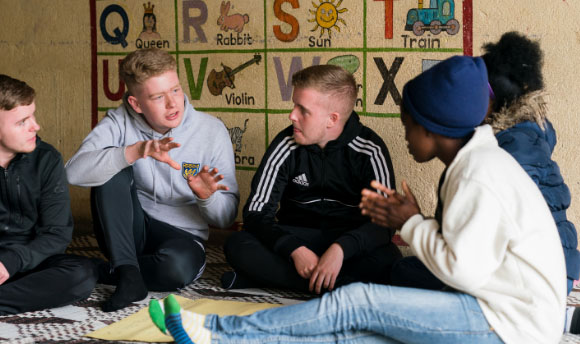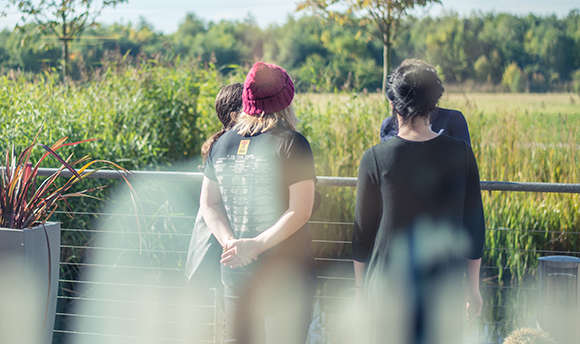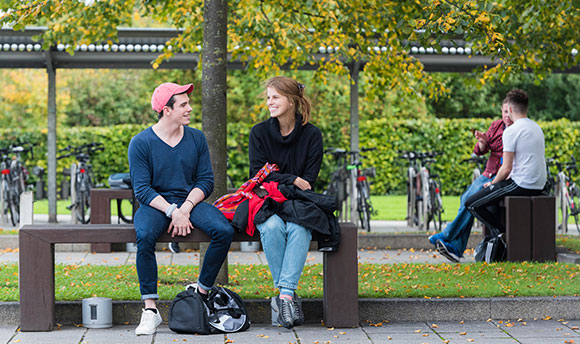A blog by Dr Clare Uytman and Dr Siân Jones
As the Paralympics kicks off this week, you may have noticed changes in the trailers for the competition.
The advertising campaign for the 2024 Paralympic Games marks a significant advancement in disability representation and challenges the ingrained attitudes of its audience.
This evolution began with the London 2012 Games, where Channel 4 not only committed to extensive coverage of the Paralympics but also aimed to increase awareness and challenge societal perceptions around disability and sport.
The challenging "Superhumans" campaign, which extended to the Rio 2016 Games, urged viewers to recognise the extraordinary talents of Paralympic athletes. However, this focus on the athletes' impairments meant that the emphasis was placed on their disabilities, rather than celebrating their athletic achievements, which sparked criticism.
A shift began with the Tokyo 2020 Paralympics and the introduction of the "Super. Human" campaign. By adding a full stop between "Super" and "Human," the campaign aimed to emphasise that these athletes are, first and foremost, human, and their abilities are extraordinary - not because they’ve overcome disabilities, but because of their inherent talent. However, this narrative still had its shortcomings - it continued to focus on the athletes’ ability to compete despite their impairments, distancing the campaign from the everyday realities of living with a disability.
The 2024 campaign takes a new direction by shifting the focus from the athletes to the viewers’ attitudes. It directly confronts the tendency of viewers to qualify their admiration with patronising phrases like, "He’s so amazing considering..." or "She’s so brave to be doing that." These statements, often heard by disabled people, reflect underlying ableist attitudes.
The 2024 Paralympic campaign aligns with this broader trend by challenging ableist perspectives and urging viewers to abandon pity, celebrating Paralympic athletes solely for their sporting achievements.
Paralympians, including canoeist Curtis McGrath, aware of the language bias, have launched their own media campaign. They are not “participating” in the games but competing in them. Language is a powerful tool to remind non-disabled people that these athletes are not to be pitied or thought brave for taking part but are fierce competitors in this arena.
Together, these campaigns aim to foster a more genuine appreciation of their talents and promote a more nuanced understanding of disability that extends beyond the notion of "overcoming" impairments.
This shift is part of a wider movement in media that is gradually redefining how disability is portrayed, encouraging more authentic and diverse narratives that reflect the true experiences of disabled individuals.
In children's media, for instance, this shift is evident in everything from books to TV programmes and toys. Author James Catchpole is at the forefront of this movement with his children’s picture books, What Happened To You? and You’re So Amazing! In these books, Catchpole, who is himself disabled, addresses the nature of both the questioning and admiration of disability in a way that places these aspects at the forefront of interactions, often at the expense of recognising other facets of the individual.
So how can we talk about and represent disability?
We work on the representation of disability in children’s material culture. Similar to books, in the toy industry, we have seen a shift from limiting representation of disability to medical settings, such as hospital playsets, to the advent of more inclusive toy ranges with accessible school buildings and transportation, accessible play parks, and a range of characters featuring disabilities from hearing or sight impairments to limb differences and wheelchair users being produced by manufacturers such as Lego, Playmobil and Barbie.
In children's television there has been an increase in representation of disability with both disabled presenters and characters being more prevalent. Television shows such as A Kind of Spark (BBC) or MixMups (Ch 5) centre on both neurodivergent and disabled characters.
However, unlike television shows gone by, these characters are not portrayed with pity or as a recovery arc, rather their unique personalities, characteristics and relationships help to normalise disability in a way that resonates with young viewers. Rather than focusing on disability as a limitation, these new shows promote an understanding of disability as a different way of being, rather than a deficit.
What’s happening in classrooms?
Within Education, we are also beginning to see this shift. While much has been done to move towards a more inclusive classroom, much of this focuses on making individual changes for the disabled child, which continues to focus on the deficit of the child. Rather, a focus on changing the environment in which the child is learning, and on considering representation of disability therein is needed to shift our classrooms more towards a socially aware environment.
Despite efforts to foster inclusion in mainstream settings, there is persistent negativity in interactions between some non-disabled children and their disabled peers. Given the significant implications of these responses, ways have been sought to create meaningful and positive interventions to reduce ableism and discrimination towards disabled children. When disability is portrayed more prominently, particularly in the classroom, our research shows only positive outcomes in children’s wellbeing and acceptance.
The General Teaching Council for Scotland republished the National Inclusion Framework in June 2022. Within it, is a series of principles on representation and accessibility which opens the idea of disability in schools beyond additional support needs. This started us thinking about how important it is to share our resources and research with schools now that they have responsibility to think about inclusion more broadly.
Good progress has been made in representing different ethnicities in schools, and now teachers need to look around their classrooms for representation of disabilities, and to think about how they could embed more. It’s not just about what’s in books, but what’s on the walls, and what’s going on in the toy corner. Instead of putting wheelchair characters who use wheelchairs in the hospital corner, why not move them to the house corner where they can be used to enact everyday life?
We have launched our website to share research evidence and free educational resources that aim to help educational practitioners to affirmatively represent and talk positively about disability with children. Through this website, educators can find resources to improve their disability literacy and incorporate this into their practice. We have also launched the ‘Disability Literacy in Education Settings Network’ - a platform for academics, professionals and stakeholders to discuss and advance research and practice in disability literacy which can be joined via this link. The network, which will meet regularly, aims to foster dialogue, knowledge exchange, and influence policy change through collaboration.
Finally, as the Paralympics are in full swing, it would be timely for educational professionals to talk about the athletes in the classroom. Our challenge in doing this is to align those conversations with social and affirmative models of disability that celebrate disabled people and their achievements, whilst recognising that away from the Olympic Village, they continue to face the same barriers that every disabled person does. Together we can work towards a more equal society.
For more teaching ideas, and dialogue around embedding positive representation of disability in classrooms as part of the curriculum, why not check out Queen Margaret University’s short online course ‘Disability Confidence for Education Practitioners’ starting on 30th September 2024. This is a six-week self-paced course, that is entirely online. For more information, and to apply, please visit this page.







